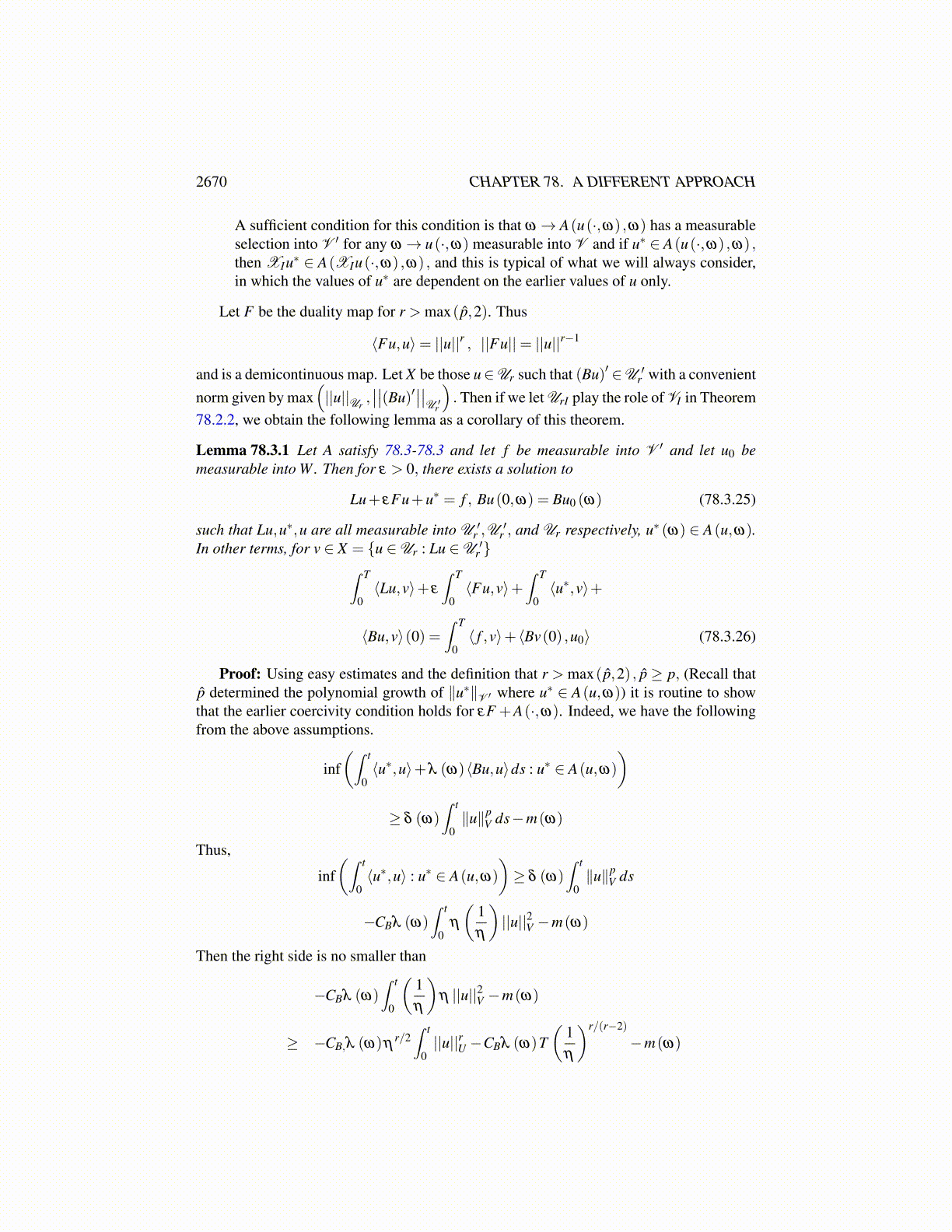
2670 CHAPTER 78. A DIFFERENT APPROACH
This shows that D(T ∗) = D(Λ) and T ∗ = Λ. Now it follows that T ∗∗ = Λ∗ and so Λ∗
is monotone because T is and the graph of Λ∗ is the closure of the graph of T . Indeed,∫ T
0
⟨−Bv′,v
⟩=∫ T
0
⟨Bv′,v
⟩so ⟨T v,v⟩= 0. The same is true of Λ∗.
Now in this case we let X be the same as before. Then we consider the approximateproblem for uε given by
ε⟨Lv,J−1 (Luε)
⟩+ ⟨Luε (ω) ,v⟩V ′,V +
12⟨Bu,v⟩(0)− 1
2⟨Bu,v⟩(T )+ ⟨w∗ε (ω) ,v⟩
= ⟨ f (ω) ,v⟩ , w∗ε (ω) ∈ A(uε (ω) ,ω)
Then using monotonicity of Λ∗ and Λ as before, one obtains the existence of a measurablesolution. To see that the necessary monotonicity holds, note that
⟨Lu,u⟩V ′,V +12⟨Bu,u⟩(0)− 1
2⟨Bu,u⟩(T ) = 0
This follows from 5 and 7. Indeed, these imply that
⟨Lu,u⟩V ′,V + ⟨Bu,u⟩(0) = 12[⟨Bu,u⟩(T )+ ⟨Bu,u⟩(0)]
and so the above follows. The rest of the argument is similar to that used to prove Theorem78.2.2. At the end you will obtain that
12⟨Bu,v⟩(0)− 1
2⟨Bu,v⟩(T ) = 0
which will require that Bu(T ) = Bu(0) since v is arbitrary.
78.3 Relaxed Coercivity ConditionThis section is devoted to proving Theorem 78.3.2 below. It includes a more general coer-civity condition and uses a slightly modified limit condition. Also, it removes the restrictionthat p≥ 2, which was made because of the terms involving B′. However, we will specializeto the case where B does not depend on t. It seems that this will be necessary because if oneis required to consider ⟨B′u,u⟩ then this won’t make sense unless p ≥ 2. In what followsp > 1.
Let U be dense in V with the embedding compact, U being a separable reflexive Banachspace. It is always possible to get such a space, (In fact, it can be assumed a Hilbertspace.) but in applications of most interest to us, it can be obtained by Sobolev embeddingtheorems. We will let r > max(2, p) and Ur = Lr ([0,T ] ;U) . Also, for I =
[0, T̂], T̂ <
T, we will denote as VI the space Lp (I;V ) with a similar usage of this notation in other